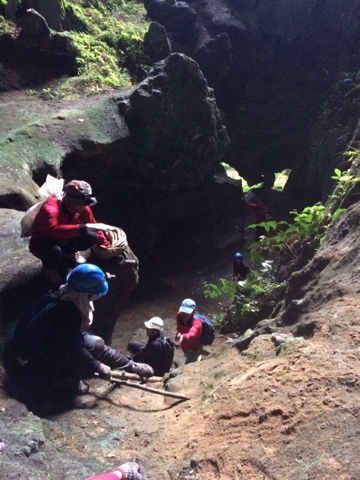By DayakDaily Team
SERIAN, June 29: Four villages in the vicinity of Gunung Silabur Caves are now ready to welcome visitors to visit the majestic jade coloured caves.
Gua Gunung Silabur Cooperative chairman Benedik Yos said the four villages participating in the eco-tourism industry consist of Kampung Batu Bedang, Kampung Batu Lin, Kampung Batu Mawang and Kampung Pulau Piranuk.
“Since we started our eco-tourism industry, the number of visitors coming to visit the caves have increased in the last three years.
“So, now that we are in post-MCO (Movement Control Order) period and people are allowed to move freely, we are also ready to receive our guests to see our beautiful Gunung Silabur Caves,” Benedik told the D’Drift Team at Kampung Batu Lin, some 20km from here today.
He added that his cooperative which manages the eco-tourism industry for the four villages now has more than 20 certified guides who are ready to provide their services.
“Additionally we have 17 families participating in the homestay programme, which can provide lodging for our visitors,” he said.
Benedik, who is also a qualified guide himself, recommended visitors spend the night in homestays so that they have time to explore the caves system.
“To explore the cave system, we need at least one whole day. This is because, besides exploring the caves, we can also bring them trekking up to the peak of Gunung Silabur,” he said, adding it would take at least another hour of steep climbing.
He also hoped that under the 12th Malaysia Plan, the government would be able to provide the necessary funding to improve the facilities to access the caves which his committee had applied for in the last two years.
“We need to improve the basic infrastructure to the caves so that caving can be adventurous and a fun activity for everyone,” he added.
Meanwhile, Gunung Silabur Caves ecotourism advisor Dr Adrian Susin Ambud said the local eco-tourism industry was developed through the people’s own initiative after the swiftlet industry declined drastically due to over-exploitation and over-harvesting in early 2000.

“Eco-tourism is the way forward for our people as the swiftlet industry has declined tremendously since 2000 because of over-exploitation as a result of high demand and high price.
“And because of that, the population of swiftlets have declined since then,” he said.
Dr Adrian’s vision for the four villages is to develop a sustainable eco-tourism industry that will include caving, homestay, culture presentation, cottage industries, handicrafts and agro-culture.
“In short, we must be able to offer our CAN (culture, arts and adventure),” he emphasised.
At the same time, Dr Adrian, who is also the Department of Veterinary Services Sarawak director, reiterated that since swiftlet farming is a lucrative business, he thus hoped that those who could afford the high capital start-up would invest in it.
“Swiftlet farming is a lucrative business and since our village has been known for its swiftlets all these years, it should also be encouraged for those who are interested to venture into it.
“As I see it, swiftlet farming could be nicely incorporated into our eco-tourism industry as our village is well known for its caves that have been producing swiftlet nests all this while,” he added. — DayakDaily






































